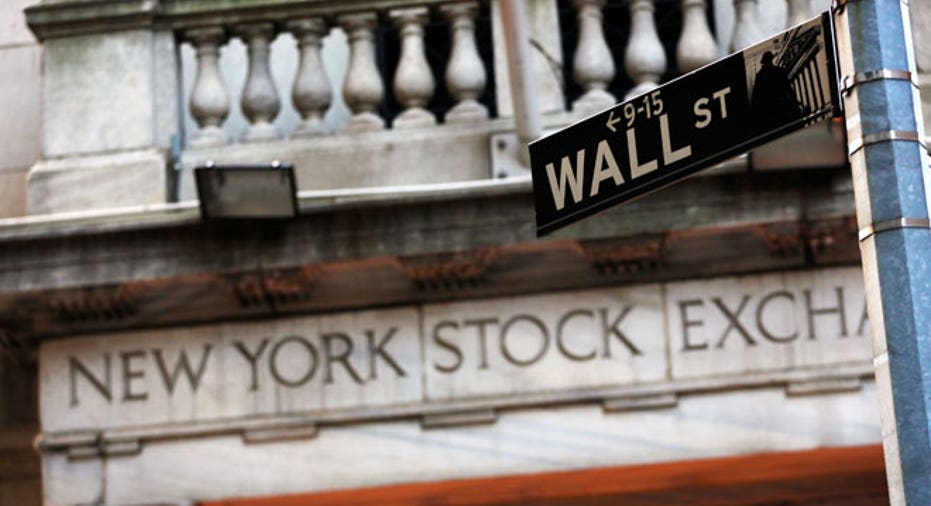Stocks at crossroads: 3 things to watch for in June

The Standard & Poor’s 500 index has set new all-time highs in four out of five months this year so far. But despite the S&P 500 being up about 7% in 2017, skepticism abounds.
Maybe stocks are overpriced. Maybe a few stocks have had an undue influence on the rally. Maybe the market is biding time until some significant sell-off.
Or maybe it’s poised for further gains.
How should you approach the market when there’s so little certainty? Here are three factors in June that might offer some clues.
1. Focus on the Fed
To say investors care about the Federal Reserve is an understatement; it’s more of an obsession. The central bank sets interest rates, confirms the prevailing view on the pace of economic growth and, particularly since the 2008 financial crisis, has helped dictate the market’s fate.
That’s why all eyes will be on the Federal Reserve’s Open Market Committee, which is scheduled to convene June 13-14. Many are expecting policymakers to raise the federal funds rate by 25 basis points, to a range of 1% to 1.25%, at the June meeting. If they do, this will mark the second increase this year and the fourth since the financial crisis.
Recent economic reports generally support the Fed’s possible decision to raise rates, says Ernie Cecilia, a chartered financial analyst and chief investment officer of Bryn Mawr Trust in Bryn Mawr, Pennsylvania. The market is notorious for hating surprises, so with the market all but counting on a rate hike, a non-move could give investors reason to push stocks lower.
“If the Fed doesn’t move, it might suggest some of the second-quarter economic data aren’t as strong as we all thought, and the market would perceive that negatively,” Cecilia says.
2. Speaking of the economy…
The pace of economic growth in the first quarter was better than previously estimated but still lackluster. U.S. gross domestic product expanded at a 1.2% annual rate, the slowest pace in three quarters, according to the U.S. Bureau of Economic Analysis.
Investors have been watching economic growth with an especially sharp eye since Donald Trump became president. His first budget projects sustained GDP growth of 3% to be achieved by 2021 — and that’s too optimistic for many on Wall Street. Annual growth hasn’t exceeded 3% since 2005, and 1996 through 2000 was the last time it achieved that rate for five consecutive years.
Investors will get the third — and most comprehensive — read on first-quarter U.S. growth when the BEA releases its final quarterly estimate on June 29.
June’s meeting comes a couple of weeks before the start of the second-quarter earnings season in early July. “For investors, this is going to have an impact on their outlook for earnings and the market, per se,” says Chris Bertelsen, chief investment officer of Aviance Capital Management in Sarasota, Florida. “We have an intersection of politics, growth in the economy and re-employment of good-paying jobs — all happening at once.”
» MORE: How to manage your 401(k) in uncertain times
3. Resilient or at risk?
The S&P 500 tumbled the most in eight months in mid-May as political turmoil within the White House dominated headlines. The sell-off showed that investors can be easy to spook, but it was short-lived.
Once the knee-jerk reaction passed, investors focused again on the possibility that some of Trump’s pro-growth initiatives, like tax reform and an infrastructure plan, could get pushed through even faster to combat negative headlines, Cecilia says.
Cecilia remains optimistic about equities, partly because guidance for second-quarter earnings is “pretty good,” but a more volatile and unpredictable environment could derail the market’s rally, he says.
June offers a reprieve before the near-breathless accounting of corporate earnings, and with many investors on vacation. Bertelsen says it can be a good period to think about how to position yourself for rising interest rates or look for long-term investments that won’t be affected by any near-term dynamics.
But a lull could actually be bad, according to a recent analysis by Bloomberg. A majority of the S&P 500’s gains in the past four years have coincided with the weeks-long period when companies report results. A quiet period could make stocks more susceptible to shocks ahead of the next reporting season in July.
June is also pretty middle-of-the-road for returns, with the S&P 500 posting average gains of 0.7% since 1928. But with so much lingering political turmoil, this June may be anything but average. And it’s impossible for investors to ignore politics, even if the market as a whole has been largely unfazed by political events this year.
More importantly, investors could finally decide to start holding back. Even after all the record highs this year, bullish sentiment — expectations that stock prices will increase in the next six months — plunged to a 2017 low of about 24% in mid-May, according to a weekly sentiment survey by the American Association of Individual Investors.
Then again, the market hasn’t broken yet, so why try to fix some of these inconsistencies now?
Anna-Louise Jackson is a staff writer at NerdWallet, a personal finance website. Email: ajackson@nerdwallet.com. Twitter: @aljax7.
The article Stocks at Crossroads: 3 Things to Watch For in June originally appeared on NerdWallet.